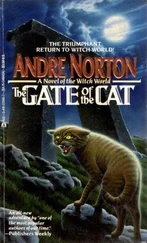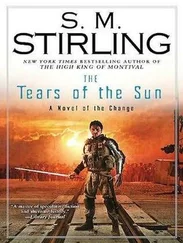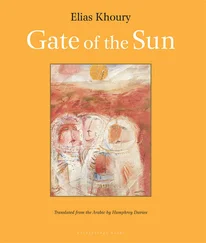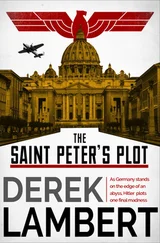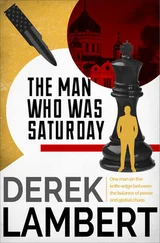The Gate of the Sun
Derek Lambert
Collins Crime Club
An imprint of HarperCollins Publishers
1 London Bridge Street
London SE1 9GF
www.harpercollins.co.uk
First published in Great Britain
by Hamish Hamilton Ltd 1990
Copyright © Estate of Derek Lambert 1990
Cover Design by Micaela Alcaino © HarperCollinsPublishers Ltd 2018 © HarperCollins Publishers 2018
Cover images © Shutterstock.com
Derek Lambert asserts the moral right
to be identified at the author of this work.
A catalogue record for this book
is available from the British Library
This novel is entirely a work of fiction. The names, characters and incidents portrayed in it are the work of the author’s imagination. Any resemblance to actual persons, living or dead, events or localities is entirely coincidental.
All rights reserved under International and Pan-American Copyright Conventions. By payment of the required fees, you have been granted the non-exclusive, non-transferable right to access and read the text of this e-book on screen. No part of this text may be reproduced, transmitted, down-loaded, decompiled, reverse engineered, or stored in or introduced into any information storage and retrieval system, in any form or by any means, whether electronic or mechanical, now known or hereinafter invented, without the express written permission of HarperCollins.
Source ISBN: 9780008287689
Ebook Edition © July 2018 ISBN: 9780008287696
Version: 2018-05-09
For Jonathan, mi hijo
Table of Contents
Cover
Title Page
Copyright
Dedication
Author’s Note
1975
Prologue
Part I: 1937–1939
Chapter 1
Chapter 2
Chapter 3
Chapter 4
Chapter 5
Chapter 6
Chapter 7
Part II: 1940–1945
Chapter 8
Chapter 9
Chapter 10
Chapter 11
Chapter 12
Chapter 13
Chapter 14
Chapter 15
Part III: 1946–1950
Chapter 16
Chapter 17
Chapter 18
Chapter 19
Part IV: 1950–1960
Chapter 20
Chapter 21
Chapter 22
Chapter 23
Part V: 1964–1975
Chapter 24
Chapter 25
Chapter 26
Chapter 27
Chapter 28
Acknowledgements
About the Author
Keep Reading …
By the Same Author
About the Publisher
There must be an element of masochism in my nature because it would be intimidating enough for a Spaniard to write a novel about the labyrinth (Gerald Brenan’s apposite choice of word) that is Spain, let alone a foreigner. It may also be interpreted by Spaniards as an impudence. What possible pretext can an Englishman proffer for chronicling in fiction 40 years of Spanish history beginning with the outbreak of the Civil War in 1936? My only justification is that I wrote the book because I love Spain and its people, and I seek forgiveness for the mistakes and occasional liberties – the over-simplification in the Civil War of Fascist and Republican was perpetrated in the interests of clarity – that inevitably occur. I would like to believe, however, that I may have arranged the words in such a way that the vibrancy of Spain rises from the pages to obscure such infelicities.
1975
Every morning the old woman in black packed a Bible in her worn bag, walked to church and prayed for forgiveness.
At first, newcomers drinking coffee and Cognac beneath the hams hanging in the Bar Paraiso questioned her fragile intensity but soon, like the old hands, they accepted her as part of the assembling day, as predictable as the arrival of Alberto, the one-legged vendor of lottery tickets and the screams of abuse from Angelica Perez as her husband scuttled from their apartment above the bakery.
None, unless they could cast their minds back 40 years, would have suspected that she had once set a torch to pews and vestments dragged from another church and spat upon a plump priest as he ran a gauntlet of hatred.
As for the woman she cared nothing for what they thought – scarcely heeded them, or the muted roar of traffic on the M30, or the squawk of the rag seller, as she made her way down a narrow street off the Marqués de Zafra in the east of Madrid.
She was 68 years old but she had spent her passions early and did not carry her years easily. Sometimes she mistook the boom and crackle of fireworks for gunfire, occasionally she confused the uniforms of the city police for the blue monos the militiamen once wore, but she did not dwell in the past. She lived rather in a suspended capsule in which the lengthening years and changing seasons were scarcely acknowledged.
Her hair was a lustrous white, combed tightly into a bun; her gaze, although the focus was remote, was steady; and her face had not yet assumed the fatalistic mask of the old and unwanted.
This bitter winter day she walked at her usual pace that never varied, whether the city was sweating in the heat of August or cowering before the snow-stinging winds of January. And such was the remote authority of her gait that the crowds parted before her as nimbly as pecking pigeons.
When she reached a corner lot, where children played basketball, the walls were daubed with fading graffiti and geraniums hung from pots crowding the balconies, she turned down an alley where, at the end, stood the church, its dome like a blue mushroom.
As she made her way down the street its occupants set their watches by her. A solicitor practising the scrolls of his signature, a purveyor of religious tracts scanning a mildly pornographic magazine, a greengrocer polishing fruit from the Canaries … At 9.18 she would enter the church, pray in the last-but-one pew and emerge at 9.23. What prayer she held in the chapel of her hands no one knew, only that it had been thus for 10 years or more.
But today she walked straight past the open door of the church without so much as a glance inside, causing consternation in this modest thoroughfare. What none of the inhabitants knew was that it was vengeance that had imparted that air of impartial arrogance for all those years and that today, instead of a Bible, she carried a gun in her worn bag.
PART I
Difficult to believe on this February morning in 1937 that, as a new day was born in the sky, men on the earth below were dying.
Tom Canfield lowered his stubby little Polikarpov from the cloud to take a closer look, but all he could see were swamps of mist, broken here and there by crests of hills – like the backs of prehistoric monsters, he thought – and the occasional flash of exploding shells.
He nosed the monoplane with its camouflaged fuselage and purple, yellow and red tailplane even lower, as though he were landing on the mist over the Jarama river. Hilltops sped past, vapour slithered over the wings; he had no idea whether he was flying over Fascist or Republican lines, only that the Fascists were trying to cut the road to Valencia, the main supply route to Madrid, 20 miles north-west of the beleaguered capital and had to be stopped.
Three months ago he could not have told you where Valencia was.
Despairing of finding the enemy, he raised the snout of the Polikarpov, known to the Fascists as a rat, and flew freely in the acres between mist and cloud, a tall young man – length sharpened into angles by the confines of the cockpit – with careless fair hair that gave an impression of warmth, and the face of a seeker of truths. The mist was just beginning to thin when he spotted another aircraft sharing the space. He banked and flew towards it and as it grew larger and darker he identified it as an enemy Heinkel 51 biplane.
Читать дальше



